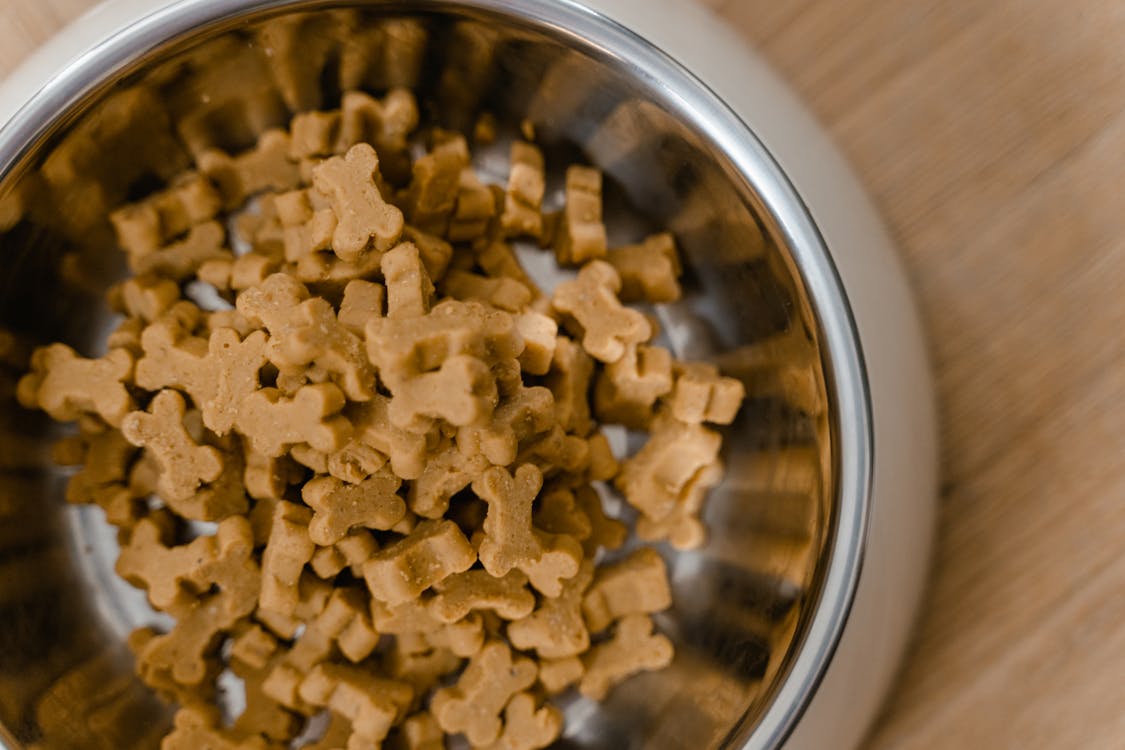With a vast array of options lining the shelves of pet stores, it can be overwhelming to choose the best nutrition for your furry companion. Understanding how to decipher the information on dog food labels is crucial in ensuring your dog receives a balanced and healthy diet. In this article, we will explore the key factors to look for when reading dog food labels, so you can make informed choices for your pet’s well-being.
Key Takeaways:
- Quality of Ingredients: It is crucial to look for high-quality ingredients such as real meat, whole grains, and natural fats, while avoiding fillers and artificial additives.
- Understanding Nutritional Content: Pay attention to the nutritional content on the labels, looking for a balance of protein, fats, carbohydrates, vitamins, and minerals tailored to your dog’s specific needs.
- Avoid Allergens and Harmful Substances: Check for common allergens like wheat, soy, and corn, as well as potential harmful substances like artificial colors and preservatives, to ensure your dog’s food is safe and healthy.
The Basics of Dog Food Labels

A key step in ensuring your dog gets the nutrition they need is understanding how to read dog food labels. These labels provide crucial information about the ingredients and nutritional content of the food. By learning how to interpret them, you can make informed decisions about what to feed your furry friend.
Decoding the Ingredients List
For the ingredients list, it’s vital to keep an eye out for the first few ingredients listed, as they make up the majority of the food. Look for high-quality protein sources like chicken, beef, or fish, as well as whole grains and vegetables. Be wary of fillers like corn or wheat, which may not provide as much nutritional value. Additionally, watch out for artificial colors or preservatives, as these additives may not be beneficial for your dog’s health.
Nutritional Information: What to Look For
What you need to focus on in the nutritional information section are the guaranteed analysis and the AAFCO statement. The guaranteed analysis breaks down the percentages of protein, fat, fiber, and moisture in the food, giving you an idea of its nutritional composition. The AAFCO statement indicates whether the food meets the minimum nutritional requirements set by the Association of American Feed Control Officials. Ensuring that the food meets these standards is crucial for your dog’s overall health and well-being.

Food labels hold valuable information that can help you make the best choices for your furry companion’s diet. Understanding how to navigate and interpret these labels is key to providing your dog with a balanced and nutritious diet that supports their health and vitality.
Identifying High-Quality Protein Sources
The Importance of Named Protein Sources
Protein is a crucial component of your dog’s diet, crucial for muscle growth, cell repair, and overall health. Pertaining to selecting a high-quality dog food, one key factor to consider is the presence of named protein sources. Named protein sources, such as “chicken,” “salmon,” or “lamb,” indicate that the specific type of meat is used in the formulation. This transparency allows you to know exactly what your dog is consuming, ensuring they are getting the necessary nutrients from quality sources.
Avoiding Filler Ingredients
Importance
It’s crucial to avoid filler ingredients in your dog’s food, as these offer little to no nutritional value and can potentially harm your dog’s health. Ingredients like corn, wheat, soy, and by-products are commonly used as fillers and can lead to digestive issues, allergies, and obesity in dogs. By selecting a dog food that prioritizes named protein sources and avoids fillers, you can provide your furry friend with a balanced and nutritious diet that supports their overall well-being.

The presence of filler ingredients in your dog’s food can dilute the nutritional content and lower the quality of the product. These fillers are often used to bulk up the food without providing any real benefits to your dog’s health. By choosing a dog food that emphasizes named protein sources and avoids fillers, you can ensure that your pet receives a diet rich in crucial nutrients and free from unnecessary additives.
Grains and Carbohydrates: Friend or Foe?
The Role of Grains in Dog Food
All living creatures need energy to survive, and for dogs, grains can be a valuable source of carbohydrates to provide that necessary energy. Grains such as rice, oats, and barley can offer dogs a good source of fuel to keep them active and healthy. However, it is necessary to note that some dogs may have allergies or sensitivities to certain grains, so it’s important to be mindful of your furry friend’s individual needs.
How to Identify Healthy Carb Sources
On the quest for the best dog food for your furry companion, it’s crucial to pay attention to the source of carbohydrates listed on the label. Opt for dog foods that contain whole grains like brown rice or quinoa, as they provide more nutrients than processed grains. Additionally, look for fruits and vegetables like sweet potatoes and peas, which are not only excellent sources of carbohydrates but also offer necessary vitamins and minerals to support your dog’s overall health.

Grains and carbohydrates, when sourced from healthy and nutritious ingredients, can be a valuable part of your dog’s diet, providing the energy they need to thrive. By selecting high-quality dog foods with wholesome grains and carbohydrate sources, you’ll be making a positive impact on your furry friend’s well-being.
Fat Content: The Good, the Bad, and the Ugly
Not all fats are created equal when it comes to your dog’s diet. Fat is an vital nutrient that provides energy and helps with the absorption of certain vitamins. However, it’s important to pay attention to the types of fats in your dog’s food to ensure they are getting the right balance for optimal health.
Essential Fatty Acids for Canine Health
The presence of vital fatty acids in your dog’s food is crucial for their overall health. Omega-3 and omega-6 fatty acids are particularly important as they play a key role in maintaining a healthy coat and skin, supporting cognitive function, and reducing inflammation in the body. Look for ingredients like fish oil, flaxseed, and chicken fat to ensure your dog is getting these vital fats in their diet.
Avoiding Unhealthy Fats
With so many dog food options on the market, it can be easy to overlook the quality of fats used in the ingredients. Avoiding unhealthy fats such as artificial preservatives, trans fats, and excessive saturated fats is key to supporting your dog’s well-being. These fats can contribute to obesity, heart disease, and other health issues in dogs. Opt for dog foods that prioritize healthy sources of fats like those derived from meat and fish.

Avoiding unhealthy fats is not only important for your dog’s physical health but also for their overall well-being. By carefully reading dog food labels and choosing high-quality options, you can ensure that your furry friend is getting the nutrition they need to thrive and live a long, happy life.
Vitamins and Minerals: The Essential Additives
The Importance of Vitamin Supplements
Once again, we investigate into the intricate world of dog food labels to highlight the significance of additives like vitamins and minerals. With vitamins, it’s crucial to ensure your furry friend is getting the necessary supplements in their diet. Just like humans, dogs need a variety of vitamins to maintain overall health and well-being. Vitamins play a vital role in supporting immune function, promoting healthy skin and coat, and aiding in proper growth and development.
Mineral Balance: Why it Matters
One of the key aspects to consider when reading dog food labels is the mineral content. Ensuring the right balance of minerals in your dog’s diet is vital for their overall health. Minerals such as calcium, phosphorus, magnesium, and iron are crucial for maintaining strong bones, teeth, and overall bodily functions. Without the proper balance of minerals, your dog may be at risk of deficiencies or imbalances that could lead to health issues.

Minerals are the building blocks of a dog’s health, playing a vital role in various physiological processes. From supporting nerve function to aiding in enzyme reactions, minerals are vital for keeping your canine companion happy and healthy. When choosing a dog food, pay close attention to the mineral content to ensure your furry friend is getting the necessary nutrients for a well-rounded diet.
Red Flags to Watch Out for
Many crucial elements on a dog food label could raise concerns about the quality and nutritional value of the product. Two main red flags to watch out for are artificial preservatives and additives, as well as by-products and fillers.
Artificial Preservatives and Additives
One of the critical things to be mindful of when reading a dog food label is the presence of artificial preservatives and additives. These substances are often included to enhance the shelf life or appearance of the food but can have negative effects on your dog’s health in the long run. Look out for ingredients like BHA, BHT, and ethoxyquin, as they have been linked to various health issues such as allergies and even cancer.
By-Products and Fillers: What They Mean
They might sound harmless, but by-products and fillers in dog food can indicate lower quality. By-products are leftover parts of the animal that are deemed unfit for human consumption, such as organs, beaks, and feet. Fillers are ingredients with little to no nutritional value, like corn, wheat, and soy. These substances are used to bulk up the food and are not the ideal source of nutrients for your pet.

Flags can be raised if a dog food label contains an abundance of by-products and fillers, as these indicate a lower quality product that may not provide your dog with the necessary nutrients for a healthy and balanced diet. When choosing a dog food, opt for products that list whole meats and vegetables as main ingredients, indicating a higher nutritional value and better overall quality.
Making Informed Choices
Reading Between the Lines: Label Claims vs. Reality
To truly understand what you are feeding your furry companion, it’s necessary to look past the flashy packaging and bold claims on the label. Terms like “all-natural,” “grain-free,” or “premium” can be misleading if not backed up by specific ingredients listed on the label. Pay attention to the order of ingredients – they are listed by weight, so the first few are the most abundant in the product. Look for whole meats and quality sources of protein, as well as necessary nutrients like vitamins and minerals.
Consulting with Your Veterinarian
To ensure you are making the best choice for your dog’s diet, consult with your veterinarian. They can provide valuable insights based on your dog’s specific needs, such as age, breed, weight, and any existing health conditions. Your vet can recommend specific brands or types of food that will support your dog’s overall health and well-being.

Informed decisions about your dog’s nutrition are crucial for their long-term health and happiness. By understanding how to interpret dog food labels and seeking guidance from your veterinarian, you can make choices that support your furry friend’s unique dietary requirements.
Summing up
To wrap up, understanding how to read and interpret dog food labels is crucial for ensuring the health and well-being of our furry friends. By knowing what to look for on these labels, pet owners can make informed decisions about the quality and nutritional value of the food they are providing for their dogs. This knowledge can ultimately lead to better outcomes in terms of the dog’s overall health and happiness.
Just as David Attenborough meticulously studies and explores the wonders of the natural world, we too can investigate into the world of dog food labels to uncover the key ingredients and nutritional information that will benefit our canine companions. By paying attention to these labels and making informed choices, we can contribute to our dogs’ longevity and quality of life, ensuring that they thrive on a diet that meets their specific needs.
FAQ
Q: Why is reading dog food labels important?
A: Understanding what is in your dog’s food is crucial for their overall health and well-being. Dog food labels provide important information about the ingredients and nutrients that your dog needs to thrive.
Q: What should I look for on a dog food label?
A: Look for high-quality protein sources as the first ingredient, important nutrients like vitamins and minerals, and avoid artificial additives, fillers, and by-products.
Q: How can I determine the quality of a dog food based on the label?
A: Check for the AAFCO (Association of American Feed Control Officials) statement, which ensures that the food meets the nutritional requirements for dogs. Look for complete and balanced formulas suitable for your dog’s life stage.
Q: What are some ingredients to avoid in dog food?
A: Avoid ingredients like artificial colors, flavors, preservatives, and fillers like corn, wheat, and soy. These ingredients offer little nutritional value and can even be harmful to your dog’s health.
Q: How can reading dog food labels help me make informed decisions about my dog’s diet?
A: By understanding what goes into your dog’s food, you can make informed choices that support their health and well-being. Reading labels allows you to select the best food for your dog’s specific dietary needs and preferences.










